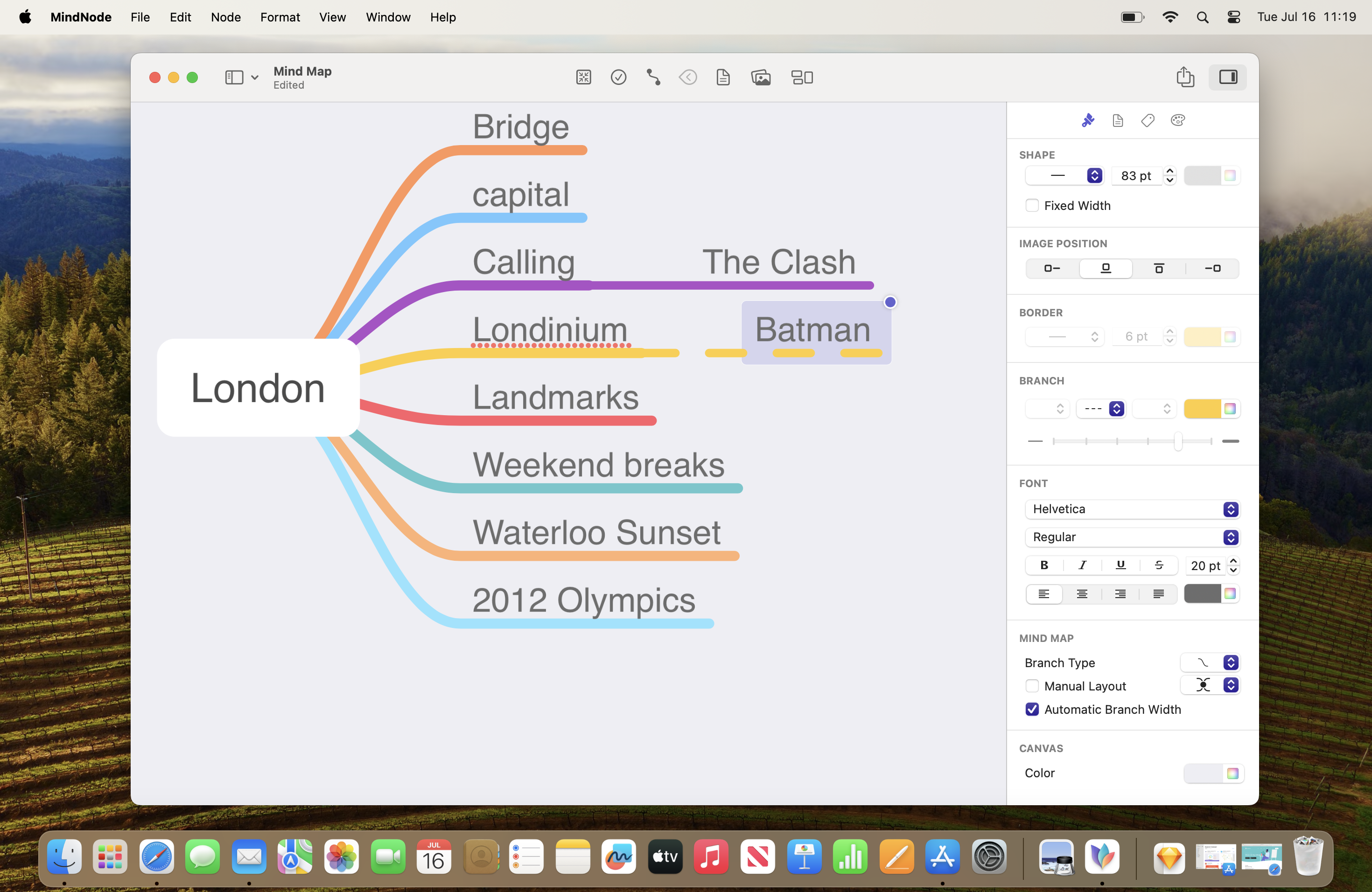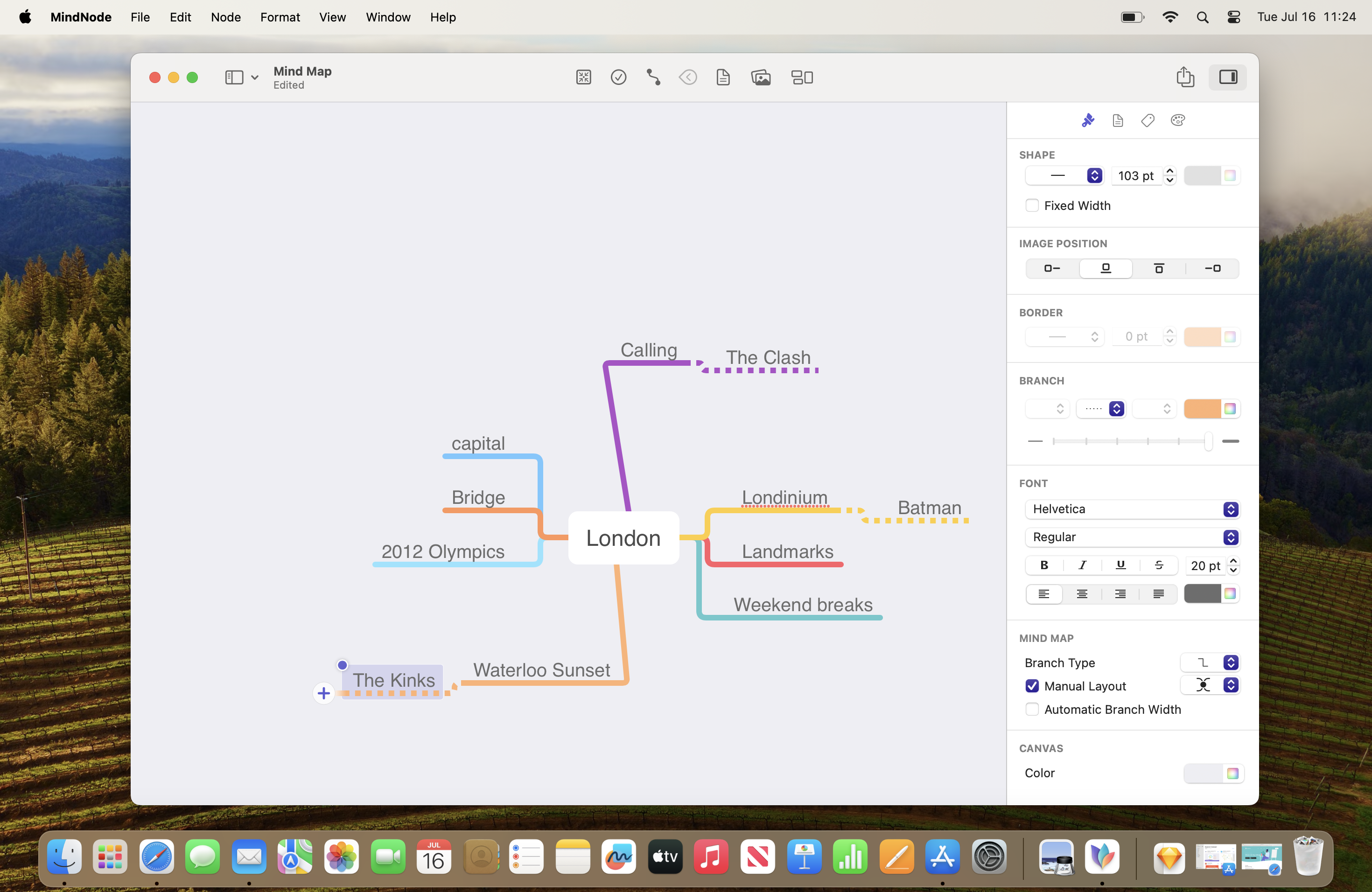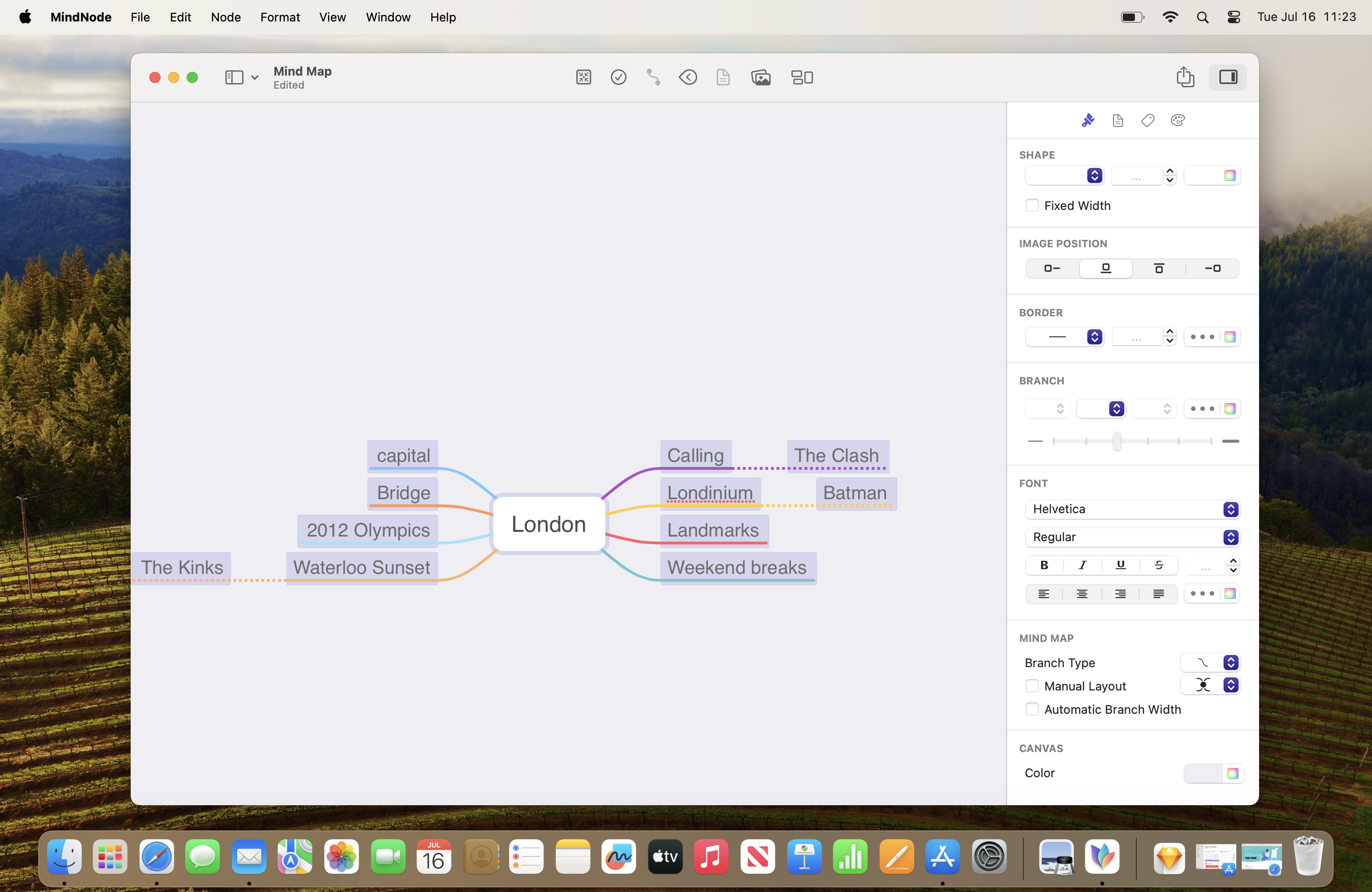TechRadar Verdict
MindNode provides a frictionless mind mapping experience for a low price, and has good export options. It lacks customizable templates, but is otherwise an excellent macOS and iOS mind mapping tool.
Pros
- +
Efficient mind mapping tool
- +
Strong collection of formatting options
- +
Very affordable
Cons
- -
No custom templates
Why you can trust TechRadar
Expressing ideas can be difficult, especially in group situations. This is where mind maps come in particularly useful, but the days of whiteboards and dry wipe markers are behind us thanks to mind mapping software like MindNode.
Published by IdeasOnCanvas GmbH, MindNode is award-winning brainstorming software first released on Mac OS X in 2008. Over the years, the software has been enhanced, remaining Mac-only, although it has spread to iOS and latterly, visionOS.
Mind map software is widely used, not only in design environments, but also education, training, and troubleshooting teams. We’ve taken a look at MindNode, assessing it based on pricing, features, ease of use, customer support, and how it stacks up against competing mind mapping tools.

MindNode: Plans and pricing
For many users, the free version of MindNode should suffice. This gives you the tools to create and edit mind map nodes, restructure the map, and easily import and export projects.
Advanced features are available with MindNode, however. For $2.99 a month or $24.99 a year, you can subscribe to MindNode Plus, which adds outlining, visual tags, focus mode, quick entry, and a range of further features not available in the free version. Notable among these are the outline view and Apple Watch support.
MindNode can be downloaded for macOS via the Mac App Store, for iPhone, iPad, and Apple Watch on the App Store, and in the visionOS App Store for augmented reality use with MindNode Next, launching later in 2024.
Payment for MindNode’s premium version is via the App Store.
Sign up to the TechRadar Pro newsletter to get all the top news, opinion, features and guidance your business needs to succeed!

MindNode: Features
As with other mind mapping tools, MindNode wants to make brainstorming easy. It does this with a combination of speed, color, and a focus on ease of use (see below). You can create a mind map using an outline tool, tag thoughts for context and categorization, and prioritize new ideas and relationships. Mind maps can be enhanced – or styled – with stickers, and themes applied. The app also has a dark mode, for night-time work.
Specific groups can be zoomed-in on, in MindNode’s Focus Mode, useful for when things get a bit busy. Meanwhile, nodes can be converted into task lists – a shopping list, research work, deadlines, holiday plans, whatever, can be checked off when completed. You can send tasks to Apple Reminders, Things 3, or Omnifocus.
MindNode can be summoned at any time in macOS, thanks to a Quick Entry form in the menu bar. The Today view on iOS offers a similar experience, ensuring you can create a new mind map with minimal effort. iOS devices as external displays are also supported, for all-important extra workspace.
Each node on a MindNode mind map can have notes added, panels can be customized to make favorite commands easy to find, and your mind map is synced to iCloud when you’re done. You can start a project on your iPhone, and finish it on your Mac.
MindNode projects can be exported in plain text, RTF, DOCX, CSV, OPML, and PDF formats. Image export, markdown, and TaskPaper are also supported.

MindNode: Ease of use
Various styles of mind map can be created with minimum effort in MindNode, which also features a text outline option. This is a common feature of mind maps, but MindNode’s presentation of the outline – with the mind map completely out of sight – recalls older practices, and came as a surprise.
While initial creation of mind maps with this software is pretty effortless, formatting is another matter. There seems to be no obvious way to assign preset formatting to subtopics, or create templates. Instead, you must apply styles manually.
For example, I expect subtopics to have a display a style subordinate to the main topic. Following subtopics should also be subordinate. This might be by utilizing a smaller font size, or emphasizing text with bold or italic. The branches to subtopics might also be easily formatted with dash or dotted lines. All of these things are possible within MindNode’s formatting and style tools, but none can be preset. There is no option to create and establish a visual style for your mind maps.
MindNode: Customer support
Various support resources are available for MindNode’s Mac and iOS versions.
Support articles have been helpfully collected in a dedicated support section of the MindNode website, with a searchable interface. User guides, release notes, and troubleshooting guides are available, with explanations for specific versions (paid, legacy, free) and problems. Solutions for issues with the software and payment/account matters are covered here.
Should your problem be something that isn’t dealt with in this part of the website, you can send an email. Unfortunately, this is a somewhat basic process, with the “Send an email” link simply launching your default mail client. Without the usual guidance (platform, version, outline of problem, screenshot upload) that tends to accompany support forms, this can slow down finding the right solution.
No chat support is available for MindNode.
MindNode: The competition
MindNode is up against an army of alternative mind mapping tools. Some are available on macOS, others as browser tools. ConceptDraw MINDMAP, Wondershare EdrawMax, and the web-only Ayoa are each strong alternatives to MindNode.
Of these, Ayoa is perhaps the superior option. While more expensive than MindNode, it offers a free version and an AI quick start tool.
MindNode nevertheless produces desirable mind maps, but isn’t as all-encompassing as EdrawMax. This is in its favor, however, as it provides a focused mind mapping environment with the tools you need. You won’t see menus for art and icons that you don’t need, and you won’t be lead down a rabbit hole of irrelevance with MindNode.
MindNode: Final verdict
MindNode produces attractive mind maps, but while it gives you the tools you need within a focused environment, its options are somewhat limited.
You’ll find a useful collection of styling and formatting options, but custom styles cannot be applied. On the other hand, the sharing and customization options are strong, and MindNode has strengths that competing apps do not. The price tag is encouraging, but the support tools less so.
If you want a mind mapping tool for macOS with good export options, and good integration with iOS, MindNode could be just what you’re looking for.
We list the best flowchart software.
Christian Cawley has extensive experience as a writer and editor in consumer electronics, IT and entertainment media. He has contributed to TechRadar since 2017 and has been published in Computer Weekly, Linux Format, ComputerActive, and other publications. Formerly the editor responsible for Linux, Security, Programming, and DIY at MakeUseOf.com, Christian previously worked as a desktop and software support specialist in the public and private sectors.

